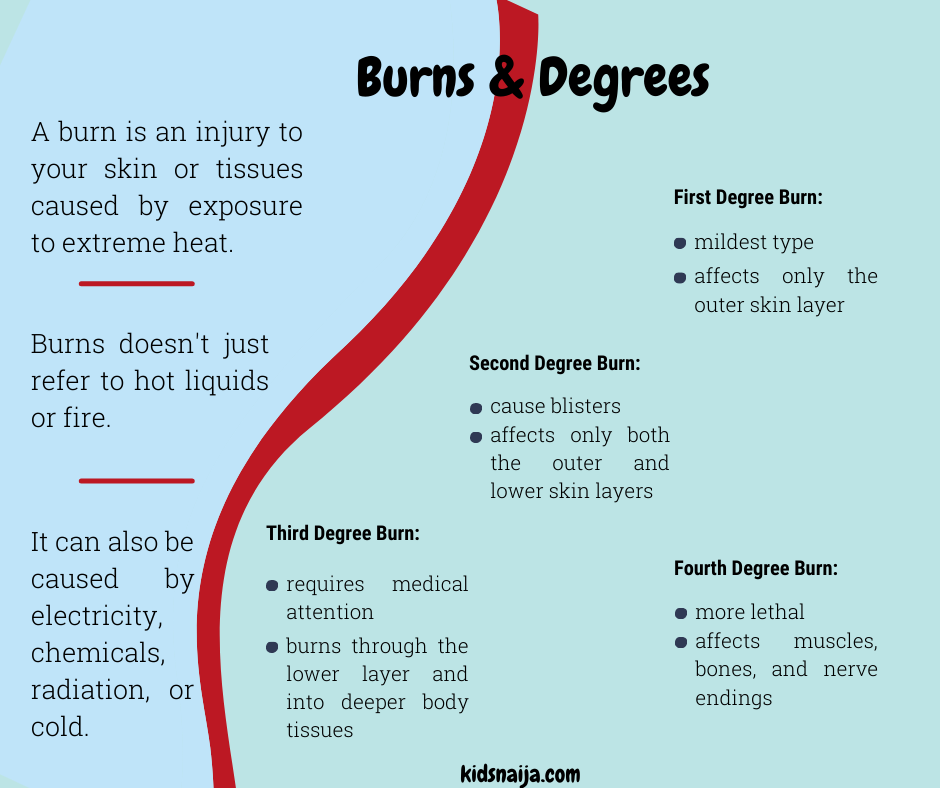If first aid is the first treatment given to relieve a sick or injured person, then first aid mistakes are wrong practices that worsen the state of the person.
However, some of the practices are quite harmless and do nothing to improve the condition.
They work in the same way that a placebo works and creates a psychological illusion that says “it works” but it doesn’t. At all.
Health emergencies in the home are something that we can’t totally avoid, especially when you have kids running around the house.
What are these first aid mistakes and why are they so terrible?
- Using Hot Water to Massage Inflammations, Fractures, Or Sprains
- Do not leave cotton wool on an open wound or cut
- Treating Burns with Greasy Fluids, Ointments, Lotions, Ink or Eggs Mixture
- Using Methylated Spirit to Treat Open Wounds or Cuts
- Inserting A Spoon in The Mouth of a Child/Person Who’s Convulsing
- Concluding Words
Using Hot Water to Massage Inflammations, Fractures, Or Sprains
This doesn’t just apply to the use of hot water, it applies to the use of heat treatment of any sort or warm compresses.
Using heat treatment doesn’t reduce inflammation unlike popular beliefs – remember all the times when you massaged your child’s swollen head or ankle with hot water?
Well, the heat treatment didn’t work. The inflammation only went down with time. But why didn’t it work?
Because when a part of your body is inflamed or swollen, there’s increased blood flow to that region and that increased blood flow doesn’t help to reduce your inflammation. And the use of heat further promotes better blood flow to that region.
With blood flow being increased, the rate at which the inflammation is meant to go down further increases.
With fractures and sprains, it’s the same thing as well because inflammation often accompanies fractures and sprains.
To reduce the swelling in a fractured or sprained region, use ice packs immediately for about 15 to 20 minutes.
How Then Do You Treat Inflammations, Fractures, Or Sprains?
Ever wondered why an athlete with a swelling (or inflammation) uses ice packs?
It’s because ice packs reduce the swelling. And if you don’t have ice packs around, then cold treatment, in general, will do the trick.
After a head butt, your head swells up because blood flow is significantly increased and to reduce that blood flow, you have to introduce an agent that works against it.
Cold treatment reduces blood flow to the region, and this brings down the swelling. Also, it has a numbing effect which helps to relieve pain.
If you don’t have ice packs around, then you can use ice cubes wrapped in a cloth, or a cold drink.
Do not apply pressure – just place the cold object on the swollen region.
When Should You Use Heat Treatment?
Because heat treatment promotes blood flow, it’s best to use it in situations where you actually need to promote blood flow.
Hence, heat treatment is used to treat muscle stiffness or soreness. It aids blood flow and offers a soothing relief as well – it can also be used for chronic pain.
Do not leave cotton wool on an open wound or cut
The idea of leaving cotton wool on an open wound or cut has never fascinated me right from childhood I hated it.
Why?
Because when the cotton wool dries up on your wound, it gets even harder to peel it off and if care isn’t taken, you might even open the wound again! And that sucks.
It’s also almost impossible to remove dried cotton wool from an open wound without leaving behind some remains.
You can use cotton wool to clean up the wound but rather than leave it on the wound, you should use a bandage instead.
Treating Burns with Greasy Fluids, Ointments, Lotions, Ink or Eggs Mixture
About 14 years ago when my sister got burned by hot water, the first treatment she received involved her burnt thigh being covered with ink.
Later that same day, they rubbed the egg mixture on it as well but that didn’t stop my sister from feeling a burning sensation, and I had to continually fan the burnt thigh.
The use of greasy fluids, ointments, butter, oils, and egg whites do not work because they keep the heat in. A burnt area is already hot and what most of these “solutions” do is to make it remain “hot”.
These oils include coconut oil, groundnut oil, olive oil, as well as other types of oils.
Can you use other fluids like ink?
The use of inks or other homemade mixtures has little or no scientific backing to prove that they work. Hence, you should stick with recommended treatment options.
How Do You Treat Burns?
There are different kinds of burns based on severity: first-degree burns, second-degree burns and third-degree burns.

The general rule is to first put out the fire or isolate the person from the “burning source” which can be hot liquids or even chemicals. Then, take off any (tight) clothing or clothing accessories like belts or bracelets.
Third-degree burns are the most dangerous type of burns, the best way to help someone with a third-degree burn is to call the hospital ASAP, and then, cover the burnt area loosely with a non-sticky material.
First-degree burns are more common, especially at home.
To treat first and second-degree burns:
- Cool the burn by running cool or lukewarm water on the burnt area for about 20 minutes. Do not use cold water or ice – stick with cool water.
- Protect the burnt area by covering it with a sterile and clean cloth. You can use bandages for smaller areas.
- Get in touch with a qualified healthcare practitioner.
Honey and aloe vera are two natural products which have been found to have healing properties for burns. However, the use of both comes after, and not before, cooling the burn with cool water.
Using Methylated Spirit to Treat Open Wounds or Cuts
Ever treated your wound with methylated spirit? I sure have!
But I’m definitely never going to use it to treat an open wound or cut again because it doesn’t help much.
Many persons use methylated spirit to disinfect a wound but this is only proper if the skin isn’t “broken” or open. Or if the cut is caused by minor things like needles or pins – that’s why it’s used before a needle prick!
But for an open wound, it not just kills the bacteria, but it also kills the nerve endings on the wound. And if the nerve endings are damaged, the healing time of your wound is increased.
That is, it takes longer for the wound to heal.
Though water won’t make the wound sterile, it’s still the best option to go for. However, if you must disinfect, then use normal saline or some other isotonic disinfectant.
Inserting A Spoon in The Mouth of a Child/Person Who’s Convulsing
The whole idea of inserting a spoon into the mouth is to prevent the child from biting or swallowing their tongue.
Guess what?!
Even without the spoon in their mouth, a convulsing child won’t bite nor swallow their tongue.
- Call a doctor and follow instructions – if this isn’t the first time, then your doctor might have told you a few more things to do. Do them.
- Ensure that the child’s immediate environment is free of objects, especially dangerous objects- clear out the environ.
- Don’t hold down the child – there’s no need to do this.
Concluding Words
There are more first aid mistakes, and some are very injurious to you and your child’s health.
Knowledge is the first and most important first aid tool. It goes beyond having a first aid kit at home to tackle health emergencies in the home.
If you have no idea how to help in an emergency, then call the doctor and ask for help.
Moreover, if there’s anything you can do before you can get to the doctor (or the doctor gets to you), your doctor will most likely let you know.


